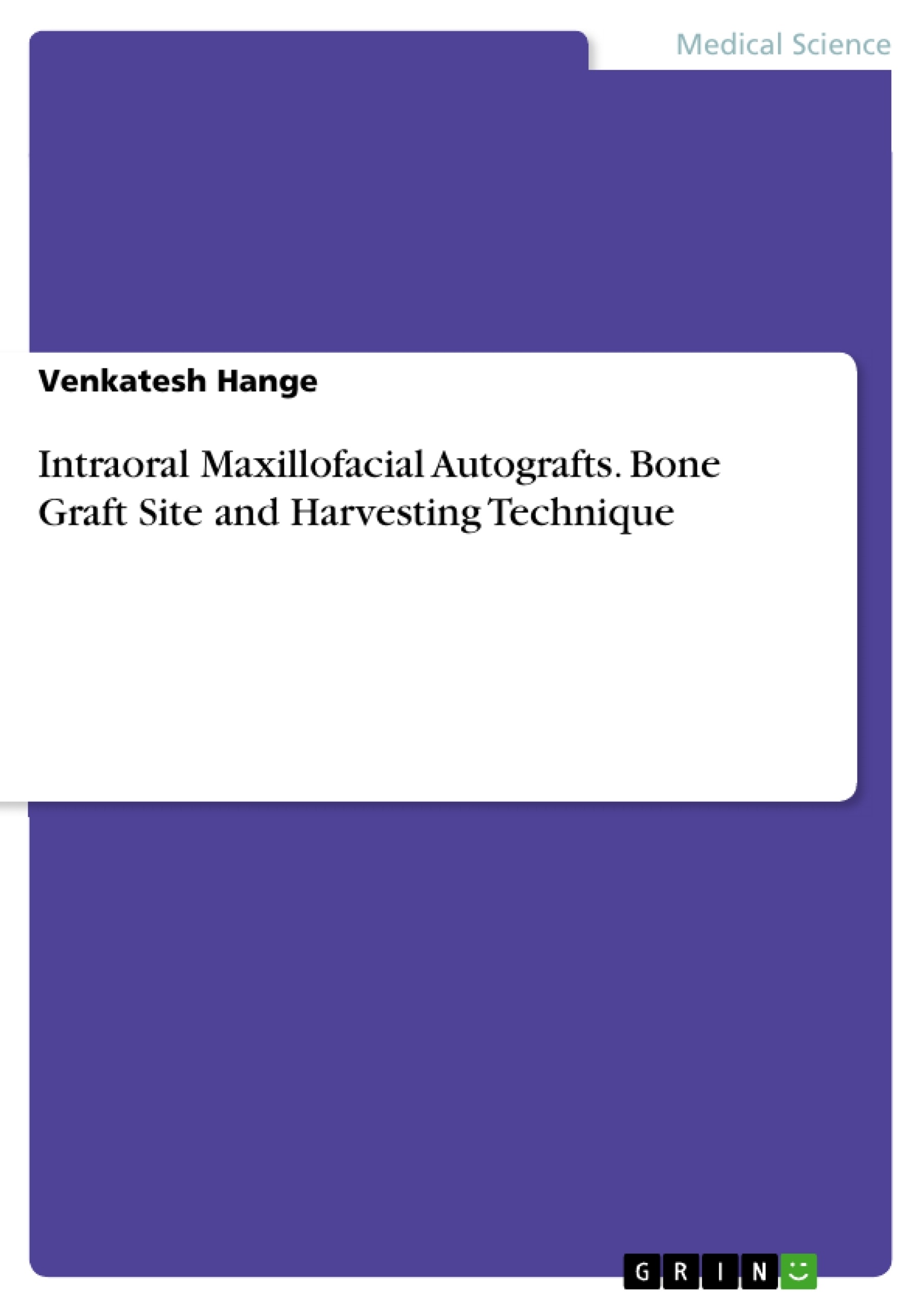Most dental practitioners are unaware or lack of bone biology, graft materials, membranes, bone harvesting or bone grafting as these topics are not uniformly explained in various hands-on cadaver, live-surgery or lecture programs. Intra oral bone grafts are used in the field of surgical oncology - head and neck. Extraoral autografts are gold standard but intraoral autografts are advantageous because their close proximity to the operating field. Also they minimize the need of second operative procedures for harvesting graft. Thus they emerge as a new alternative to classic extraoral autografts. They are also used in maxillofacial surgery, trauma, plastic surgery et cetera. This book will be useful for dental students, implantologists, prosthodontists, oral surgeons, oncosurgeons and orthopaedic surgeons.
Reconstruction of maxillofacial continuity defects has always been a challenging task for the scientists and surgeons over the years. The main objective of the maxillofacial region's reconstruction is to restore the facial form, function, complete rehabilitation of occlusion and articulation. A refinement in surgical technique and methods of reconstruction has improved patient’s quality of life. Bone Grafting is one of the commonest operations performed in Orthopaedics. Its indications include non-union, delayed union, packing bone cysts and cavities, elevating depressed articular fractures and reconstruction of large bone defects. Autografting from the iliac crest is the gold standard. Publications on mandibular reconstruction with free bone grafts date from as early as the end of the eighteenth century and beginning of the nineteenth century. Bardenheuer and Skyoff reported the first cases of mandibular reconstruction with autologous bone grafts harvested from the iliac crest, tibia, and rib. Considerable experience treating traumatic mandibular defects was gained during the First World War.
Inhaltsverzeichnis (Table of Contents)
- Chapter 1
- Introduction To The Bone Graft
- Introduction
- Defect classification system
- ndications for bone grafting
- Mechanism of action of bone grafts
- Incorporation of bone grafts into the recipient site
- Growth factors
- Chapter 2
- Biology of Bone Tissue: Structure, Function, and Factors.
- Introduction
- Functions of Bone
- Blood Supply of Bone
- Types of Bones
- Bone remodeling
- Chapter 3
- Intraoral Maxillofacial Bone Grafts
- Introduction
- Symphysis block harvesting
- Maxillary tuberosity harvest
- Anterior palate graft harvesting
- Retromolar bone graft harvest
- Zygomatic process of maxilla graft harvest
- Coronoid process of the mandible
- Mandibular tori
- Anterior maxillary wall graft harvest
- Anterior Nasal Spine graft harvest
- Ramus Bone graft harvest
Zielsetzung und Themenschwerpunkte (Objectives and Key Themes)
This book aims to address the gap in knowledge surrounding intraoral bone grafting techniques, which are often overlooked in conventional implant dentistry training programs. It provides a comprehensive understanding of bone biology, graft materials, and harvesting techniques, particularly emphasizing the advantages of intraoral autografts in maxillofacial surgery.
- Importance of bone grafting in implant dentistry and maxillofacial surgery
- Detailed anatomy and biology of bone tissue
- Exploration of various intraoral bone grafting techniques
- Benefits and considerations of intraoral autografts
- Applications of bone grafting in various surgical specialties
Zusammenfassung der Kapitel (Chapter Summaries)
Chapter 1 provides a comprehensive overview of bone grafting, encompassing its indications, mechanisms of action, and the incorporation of grafts into recipient sites. It also delves into the role of growth factors in bone regeneration.
Chapter 2 focuses on the biology of bone tissue, examining its structure, function, blood supply, types, and the process of bone remodeling. This chapter lays the foundation for understanding the complexities of bone regeneration and grafting.
Chapter 3 presents a detailed exploration of various intraoral maxillofacial bone grafting techniques. It covers harvesting methods for different bone sources, including the symphysis block, maxillary tuberosity, anterior palate, retromolar region, zygomatic process, coronoid process, mandibular tori, anterior maxillary wall, anterior nasal spine, and the ramus of the mandible.
Schlüsselwörter (Keywords)
Intraoral bone grafts, maxillofacial surgery, implant dentistry, bone biology, bone harvesting, autografts, bone regeneration, growth factors, defect classification, symphysis block, maxillary tuberosity, anterior palate, retromolar region, zygomatic process, coronoid process, mandibular tori, anterior maxillary wall, anterior nasal spine, ramus bone graft.
- Arbeit zitieren
- Dr. Venkatesh Hange (Autor:in), 2018, Intraoral Maxillofacial Autografts. Bone Graft Site and Harvesting Technique, München, GRIN Verlag, https://www.grin.com/document/499904



